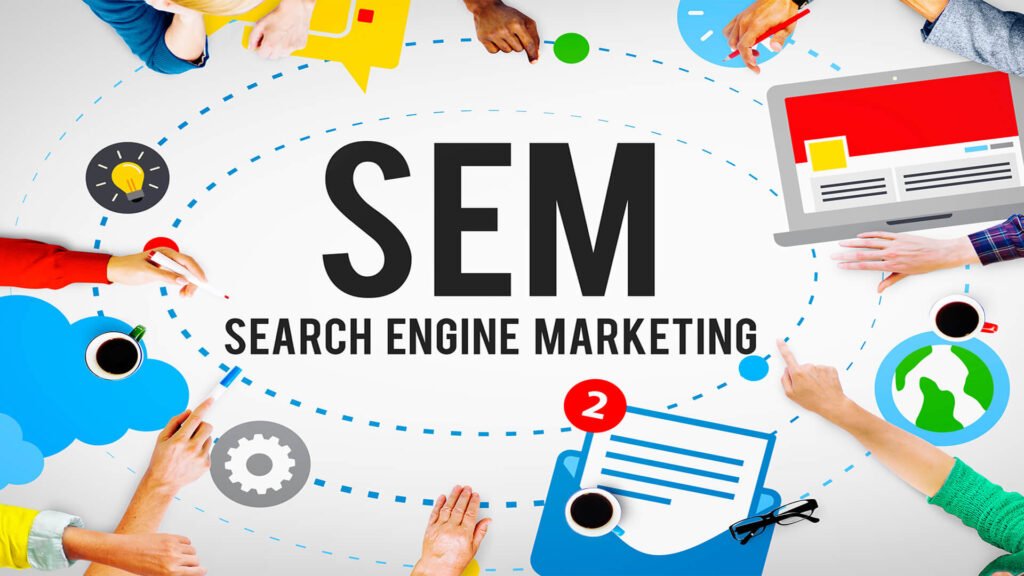As technology continues to advance, businesses are increasingly seeking ways to establish their online presence and reach their target audience. One of the most effective strategies for achieving this is through search engine marketing (SEM). SEM involves promoting your website by increasing its visibility in search engine results pages (SERPs). In this article, we will provide you with a comprehensive guide to search engine marketing. Specifically, we will discuss the benefits of SEM, different techniques that can be used, and best practices to follow
Introduction
Search engine marketing is a crucial component of any digital marketing strategy, as it can significantly increase your website's visibility in SERPs. To achieve this, various techniques and tactics are used, such as improving the quality and relevance of your website's content, increasing its authority and popularity, and using paid advertising to attract more visitors.
SEM has become increasingly important over the years due to the rise of mobile devices and the internet's widespread use. More people are now using search engines to find information, products, and services online, making it a valuable tool for businesses to reach their target audience. This guide to search engine marketing will provide you with everything you need to know about SEM.
What is Search Engine Marketing?
In addition, search engine marketing often involves analyzing and tracking website traffic and user behavior to optimize the effectiveness of these techniques. By utilizing SEM, businesses can reach their target audience more effectively and efficiently than traditional marketing methods. Moreover, SEM offers measurable and trackable results, which enables businesses to continuously improve and refine their marketing strategies.
The goal of SEM is to increase your website's visibility in SERPs, attract more visitors to your site, and ultimately increase sales and revenue. It involves optimizing your website's content, structure, and performance to make it more appealing to both search engines and users.
Benefits of Search Engine Marketing
There are several benefits of search engine marketing, including:
- Increased visibility and traffic: SEM can help increase your website's visibility in SERPs, attracting more visitors to your site.
- Targeted marketing: SEM allows you to target specific keywords, demographics, and geographic locations, making it easier to reach your target audience.
- Cost-effective: SEM can be more cost-effective than traditional advertising methods, such as TV, radio, or print ads.
- Measurable results: SEM provides measurable results, allowing you to track your progress and adjust your strategy accordingly.
- Increased sales and revenue: By increasing your website's visibility and attracting more visitors, SEM can help boost sales and revenue.
Difference Between SEM and SEO
While both SEM and SEO involve improving your website's visibility in SERPs, they are two different strategies. SEO focuses on optimizing your website's content, structure, and performance to rank higher in organic search results. SEM, on the other hand, involves using paid advertising to promote your website in SERPs.
SEO is a long-term strategy that requires ongoing optimization and maintenance, while SEM can provide more immediate results but requires ongoing investment.
Components of SEM
SEM consists of several components that work together to improve your website's visibility in SERPs. These include:
> Keyword Research and Analysis
In addition to identifying the keywords and phrases your target audience uses, keyword research and analysis also involves determining the search volume and competition level for each keyword. This helps you prioritize which keywords to target and optimize your website accordingly. Moreover, by analyzing the keywords your competitors are targeting, you can gain insights into their digital marketing strategy and identify opportunities to differentiate yourself.
> On-Page Optimization
On-page optimization involves improving your website's loading speed, ensuring it is mobile-friendly and responsive, and optimizing its internal linking structure to make it easier for search engines to crawl and index your site. It also involves using schema markup to provide more context to search engines about the content on your website.
> Link Building
In addition, link building involves building relationships with other websites and creating high-quality content that naturally attracts backlinks. This process requires a strategic approach and may involve guest blogging, broken link building, and outreach to relevant websites in your industry or niche.
> Paid Search Advertising
Paid search advertising allows businesses to target specific keywords and demographics to reach their desired audience. Advertisers only pay when someone clicks on their ad, which makes it a cost-effective way to drive traffic to their website. Ad campaigns can be optimized over time to improve performance and maximize return on investment (ROI).
> Display Advertising
Display advertising involves creating and running ads on websites, apps, or social media platforms. These ads can be in the form of banners, videos, or interactive media.
> Social Media Advertising
Social media advertising, on the other hand, involves creating and running ads on various social media platforms such as Facebook, Twitter, or LinkedIn. These ads come in various forms, including sponsored posts, promoted tweets, or LinkedIn ads.
> Local Search Marketing
Local search marketing involves optimizing your website for local searches and attracting visitors from your local area. This includes optimizing your website's content and structure for local keywords, creating local business listings, and building local citations.
> Mobile Optimization
Mobile optimization involves optimizing your website for mobile devices like smartphones and tablets. This includes creating a responsive website design, optimizing your website's content and structure for mobile users, and using mobile-friendly features like click-to-call buttons and mobile-friendly forms.
> Tracking and Measuring Results
Tracking and measuring results is essential to the success of your SEM strategy. This involves using tools like Google Analytics to track your website's traffic, conversion rates, and other metrics, and using this data to adjust your strategy accordingly.
Guide to Search Engine Marketing: Best Practices
To get the most out of your SEM strategy, it's important to follow these best practices:
- Conduct thorough keyword research and analysis to identify high-volume, low-competition keywords.
- Optimize your website's content, structure, and performance for both search engines and users.
- Build high-quality backlinks from other websites to your website.
- Use paid search advertising to promote your website in SERPs.
- Use display advertising, social media advertising, and local search marketing to attract more visitors to your site.
- Optimize your website for mobile devices to reach more users.
- Track and measure your results to adjust your strategy accordingly.
Conclusion
Search engine marketing is a crucial component of any digital marketing strategy. By using a combination of techniques like SEO, paid search advertising, display advertising, social media advertising, and local search marketing, businesses can increase their website's visibility in SERPs, attract more visitors, and ultimately boost sales and revenue. Please share your thoughts in the comments about this Guide to Search Engine Marketing.




